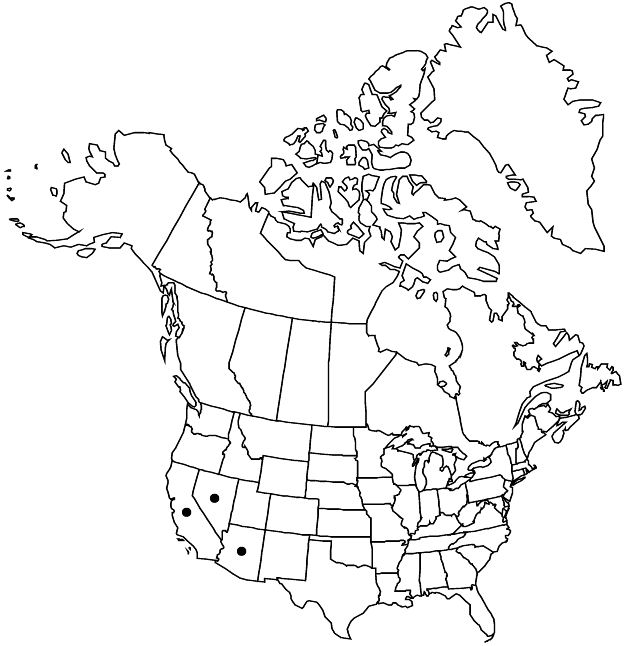Difference between revisions of "Holodiscus microphyllus var. sericeus"
Bull. Torrey Bot. Club 70: 283. 1943.
FNA>Volume Importer |
imported>Volume Importer |
||
| (3 intermediate revisions by 2 users not shown) | |||
| Line 23: | Line 23: | ||
|elevation=1500–3000 m | |elevation=1500–3000 m | ||
|distribution=Ariz.;Calif.;Nev.;Mexico (Baja California). | |distribution=Ariz.;Calif.;Nev.;Mexico (Baja California). | ||
| − | |discussion=<p>The unusually dense, white to silvery white, sericeous indumentum that characterizes < | + | |discussion=<p>The unusually dense, white to silvery white, sericeous indumentum that characterizes <i></i>var.<i> sericeus</i> is found only in northwestern Arizona, extreme southern <i>Nevada</i>, some desert mountains of southern California, and northern Baja California, Mexico. In this region, <i></i>var.<i> microphyllus</i> also occurs but its populations are usually disjunct. The primary problem in distinguishing <i></i>var.<i> sericeus</i> arises when specimens actually belong to <i></i>var.<i> microphyllus</i> but are abaxially off-white to light gray and tomentose to villous.</p> |
|tables= | |tables= | ||
|references= | |references= | ||
| Line 32: | Line 32: | ||
-->{{#Taxon: | -->{{#Taxon: | ||
name=Holodiscus microphyllus var. sericeus | name=Holodiscus microphyllus var. sericeus | ||
| − | |||
|authority=F. A. Ley | |authority=F. A. Ley | ||
|rank=variety | |rank=variety | ||
| Line 47: | Line 46: | ||
|publication year=1943 | |publication year=1943 | ||
|special status= | |special status= | ||
| − | |source xml=https:// | + | |source xml=https://bitbucket.org/aafc-mbb/fna-data-curation/src/2e0870ddd59836b60bcf96646a41e87ea5a5943a/coarse_grained_fna_xml/V9/V9_708.xml |
|subfamily=Rosaceae subfam. Amygdaloideae | |subfamily=Rosaceae subfam. Amygdaloideae | ||
|tribe=Rosaceae tribe Spiraeeae | |tribe=Rosaceae tribe Spiraeeae | ||
Latest revision as of 22:58, 5 November 2020
Short-shoot leaf surfaces sessile- and/or stipitate-glandular (often obscured by hairs), abaxial white, sometimes silvery white, veins, intercostal regions, and margins obscured by hairs, densely sericeous, white granular deposits sparse, adaxial white short-villous. Inflorescences 2–6 × 1–4 cm. Pedicels 2–3 mm. Flowers: nectar disc sparsely white-hirsute; sepals densely white-tomentose, usually eglandular; petal base abaxially with few, scattered long hairs.
Phenology: Flowering Apr-–Jun.
Habitat: Rock outcrops, often limestone, sandy loam soil derived from diorite, margins of ponderosa pine woodlands, Jeffrey pine forests, pinyon pine-juniper woodlands
Elevation: 1500–3000 m
Distribution

Ariz., Calif., Nev., Mexico (Baja California).
Discussion
The unusually dense, white to silvery white, sericeous indumentum that characterizes var. sericeus is found only in northwestern Arizona, extreme southern Nevada, some desert mountains of southern California, and northern Baja California, Mexico. In this region, var. microphyllus also occurs but its populations are usually disjunct. The primary problem in distinguishing var. sericeus arises when specimens actually belong to var. microphyllus but are abaxially off-white to light gray and tomentose to villous.
Selected References
None.